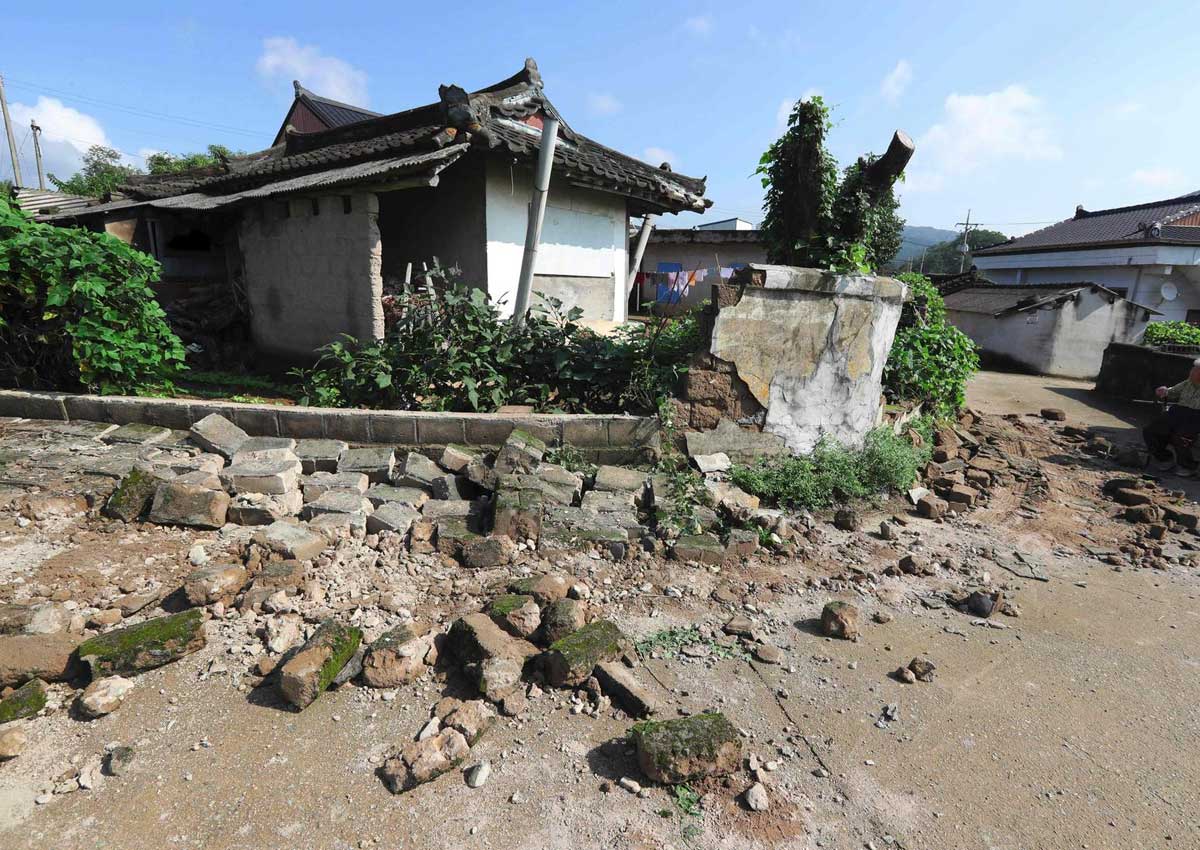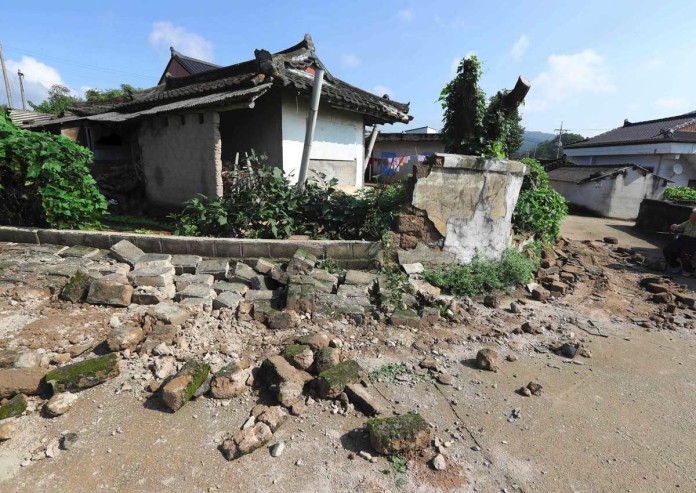SEOUL – Two earthquakes that jolted South Korea on Monday night, including the largest ever recorded in the country, prompted concerns about the safety of nuclear plants clustered in the quake-prone southeast.
Korea’s Meteorological Agency said the two earthquakes, of magnitude of 5.1 and 5.8, occurred near the city of Gyeongju. They could be felt in the capital Seoul, over 300 km (186 miles) to the northwest.
Fourteen people were injured but there were no reports of serious damage, a Ministry of Public Safety and Security official said.
Nonetheless, Korea Hydro & Nuclear Power Co shut down four nuclear reactors at the Wolsong complex in Gyeongju as a precaution.
South Korea’s reactors are designed to withstand a magnitude 6.5 or 7.0 earthquake, according to the Nuclear Safety and Security Commission.
Orders were given to nuclear operators to upgrade old reactors to that standard after the disaster at Japan’s tsunami-crippled Fukushima Daiichi nuclear power plant in 2011. “That will be completed by next year,” said Shim Eun-jung, a spokeswoman at the nuclear watchdog.
South Korea’s 25 reactors supply about one-third of its electricity and make it the world’s fifth-largest user of nuclear power. It plans to add 9 more nuclear plants by 2027, according to the nuclear watchdog.
As in many countries, nuclear power is controversial in South Korea, especially after a 2012 scandal over parts being supplied with fake certificates prompted shutdowns.
Park Jong-kwon, head of an anti-nuclear civic group in South Gyeongsang Province, said no more nuclear reactors should be built in southeastern cities like Ulsan and Gyeongju as they are close to an active fault line.
“Even though nuclear reactors are designed to withstand an earthquake of a magnitude 7.0, if they are hit by 4.5 and 5.8 magnitude earthquakes several times, they can be knocked down by a real 7.0 magnitude earthquake at a single blow,” Park said.
About 70 percent of South Korea’s nuclear reactors are in the southeast, partly to locate them further away from North Korea, with which the country remains technically at war.
Greenpeace Korea filed a lawsuit against the nuclear watchdog on Monday, before the earthquakes, urging it to scrap a plan to add two more reactors in Ulsan.
Koreans living near the nuclear power plant in Gyeongju city also voiced anxiety. “When I heard the news, the first thing that came to my mind was that a Fukushima-like accident could happen,” Byun Woo-hee, a 59-year-old professor, said.






